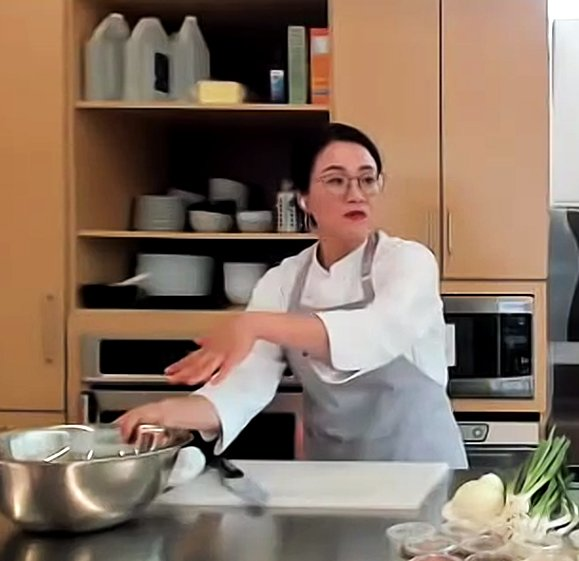
Top 5 Tips For Making Pork Bulgogi
Ready for some awesome and useful tips about Korean cuisine?
“DID YOU KNOW? In Korea, pork is traditionally used in spicy dishes, while beef is often prepared with soy-based sauces, more salty than hot.”
Honestly, I wasn’t even ready for how much good advice we got for cooking Korean dishes in general, because we were technically only learning how to make pork bulgogi.
As part of their K-Food program, the Korean Cultural Centre of Canada regularly hosts cooking workshops throughout the year; in person at the KCC here in Ottawa, they provide the ingredients and you actually get to cook alongside the instructor (usually in teams since cooking can be a lot of work alone).

These classes typically fill up within hours of the registration going live which is a big part of the reason I’ve never blogged about one before; however, the dedicated staff at the KCC have worked hard to make more events accessible for those who can’t attend in person, and now you can join many of the lessons online via Zoom.
If that sounds interesting to you then definitely check out the upcoming classes on the website or follow them on social media to stay up-to-the-minute on registration links.
Now, let’s get to the tips!
Top 5 Tips For Cooking Pork Bulgogi with the KCC K-Food Program
#1: Pay attention to the kind of flakes you’re using!
If you’re talented and/or brave enough to make your own gochujang (I always just buy mine from the store!), make sure you’re using fine hot pepper flakes, because you don’t want your paste to be grainy. On the other hand, if you’re preparing kimchi, you want to add that distinct spicy taste with coarse hot pepper flakes.
#2: Prepare the meat before marinating!
Meats like beef and chicken can easily absorb marinade without extra effort, but pork needs prep if you don’t want to end up with a bland dinner. Since pork is a very “juicy” meat, there’s a lot of moisture in there which could dilute the marinade, so our teacher recommended putting it in a colander in the sink and let it sit for a while to drain. You also want to make sure you marinate before adding the oil, because oil creates a barrier that prevents proper absorption.
#3: Balance out the flavors!
Since bulgogi has plenty of hot pepper flakes and garlic (lots of garlic!), you need to balance the spicy and salty with sweet and sour. For the sweet, straightforward sugar. The instructor emphasized sugar is a crucial ingredient for making the dish palatable – you don’t ever need to worry about bulgogi turning out “too sweet” if you follow the recipe. And for the sour, you want to use something with notes of vinegar. This class used plum paste, but you can also use cooking wine, or if you’re feeling adventurous, maple syrup!
#4: Take your time and don’t cook too much at once!
Your pan of choice should already be hot before the bulgogi goes in (otherwise the dish will stew instead of cook), so you can start preheating it while getting all the post-marinade touches ready. It’s also advised to not try to cook too much at once or you could end up with unevenly cooked pork, which, unlike beef, is not safe to eat if you can see pink in the meat. The best advice to avoid this happening is to cook only small amounts at a time (it goes faster anyway!).
#5: Adjust the recipe as you need to!
This recipe is based on the traditional preparation of the dish, but you can make adjustments for personal preferences. If you want to reduce how spicy it tastes, don’t touch the hot pepper flakes – reduce the amount of black pepper (it seems counterintuitive, I know). If you’re not a fan of certain veggies you can swap them for another, although our wonderful instructor recommends against using mushrooms in pork-based dishes (they go better with beef). And hey, if you’re a great cook, unlike myself, there are probably all kinds of other tweaks and tricks to be discovered.
“Extra tip: For a more flavorful experience, leave yourself two days ahead so you can marinate the meat overnight, flip it over, and marinate overnight again.”
I hope you find these tips useful next time you crave pork bulgogi! And I hope I get to have more experiences with the Korean Cultural Centre’s K-Food program because there’s nothing quite like preparing a hearty meal for people you love.

You can find the original posthere